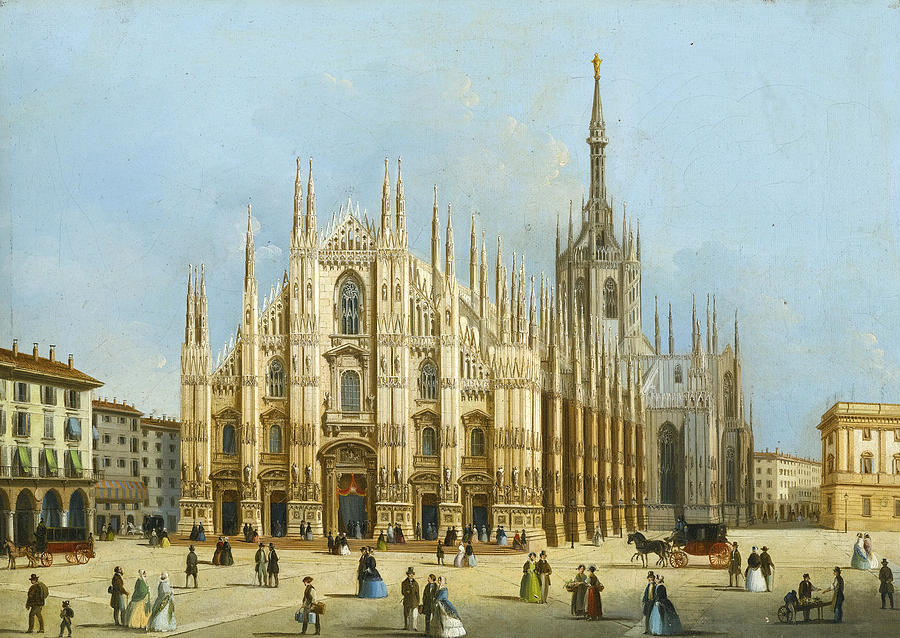
A gleaming thread, gossamer yet firm, connects the poet Rainer Maria Rilke with the Popess card of the Visconti-Sforza tarot, an odd and enigmatic artwork from late medieval Northern Italy. This is Part 1 of a three-part post on Rainer Maria Rilke and The Popess tarot card. PART 1 | PART 2 | PART 3 | SOURCES | Brief Intro to the Tarot
The Ballad of the Love and Death of the Cornet Christoph Rilke, by German poet Rainer Maria Rilke (1875–1926), is a quasi-Arthurian tale of a young man who goes to war, finds respite from privation and violence in the arms of a beautiful (married) woman who lives in a castle, then dies defending the colors of his company. Rilke whipped out the prose-poemin one white night. It was 1899; he was twenty-three. The slender book’s first publication gained little attention, but its reissue in 1912 became a German best-seller that would be carried by soldiers into the trenches of World War I. Rilke himself was bemused by its success, but remained indulgent toward the work’s youthful ardor.

Young Rilke found his protagonist among old family documents—a Christoph Rilke who, in 1663, died in the Austro-Turkish War. The Ballad introduces Christoph with an excerpt from the documents: “… on 24 November 1663, Otto von Rilke of Langenau, Graenitz and Ziegra was invested with [the estate shares of] his brother Christoph, who fell [in battle] in Hungary.”
Langenau was a district in Saxony, an electorate (member) of the Holy Roman Empire and situated in present-day northern Germany. When the Ottomans invaded Hungary in the summer of 1663, Saxony’s fighting men got called up to help push them back.

Christoph Rilke, “according to the death certificate, had died as a Cornet [a junior cavalry officer and standard-bearer] in Baron von Pirovano’s Company of the Imperial Austrian Heyster Cavalry Regiment….”
The Pirovano Family
Christoph’s commander, Baron von Pirovano, descended from an ancient Lombard family. Around 1240, Anastasia Pirovano married Tebaldo Visconti of Milan. [This is not the Teobaldo who became Pope Gregory X.] The union begot a powerful dynasty. Through ruthless tyranny, military conquest, and acquisition of wealth, as well as canny statesmanship, marriage alliances, and efficient governance, the descendants of Anastasia Pirovano and Tebaldo Visconti built Milan into an Italian superpower rivaling Rome and even Venice. A highly visible trace of their legacy is the Duomo, or cathedral, of Milan, whose ambitious, even grandiose, construction was directed by a Visconti.

The Duomo is not only a house of prayer. It functions as a civic trophy room, decorated with banners seized from defeated enemies — banners of the sort Cornet Christoph Rilke died defending. A marble tablet inside commemorates two Pirovano archbishops. Members of other high-ranking families, including the Visconti, also served as archbishops of Milan.
Such ecclesiastical prestige might seem to signal favoritism on the part of Rome. It did not. In an age when the Vatican jostled for power alongside kingdoms and duchies, not to mention the Holy Roman Empire, the rulers of Milan and the pope were more often rivals than allies. Milan even adopted its own liturgy, attributed to the city’s patron saint, Ambrose, bishop of Milan from 374 to 397. The Ambrosian rite varies from the Roman in many ways, including calendar, devotional hours, and ceremonial forms. The Papacy made several attempts, some forceful, to implement the Roman rite in Milan, but all failed. The Milanese retain the Ambrosian rite to this day.
Anastasia Pirovano’s and Tebaldo Visconti’s son and heir, Matteo (1247–1322) cultivated, to put it nicely, an inharmonious relationship with the Vatican. Hostilities culminated when Pope John XXII accused Matteo Visconti and his sons of multiple crimes, from harassing Papal envoys to heresy and sorcery.
Enter, the Popess of the tarot. Part 2: A holy woman
RENAISSANCE ITALY: GLORY, BEAUTY, GREED, WAR.
A POWERFUL HOLY WOMAN. THE INQUISITION….
A novel based on the true story of the Popess card of the tarot.
BUY: Signed by author, free shipping in US
BUY: bookshop.org | Amazon US | Amazon CA | B&N | indiebound
“Enchanting & richly historical, heart-wrenching & intoxicating.” —Stuart R. Kaplan, author Pamela Colman Smith.
“A storytelling treasure. The sights, smells, feel of Renaissance Italy seep from every pore of the story.” —Ron Andre, A Matter of Fancy

Pingback:Rainer Maria Rilke and the Tarot Popess | Part 3 | JEAN HUETS
Pingback:Rainer Maria Rilke and the Tarot Popess | Part 2 | JEAN HUETS